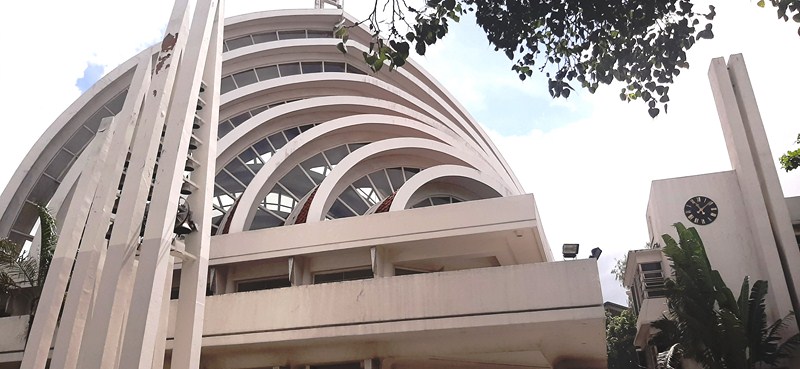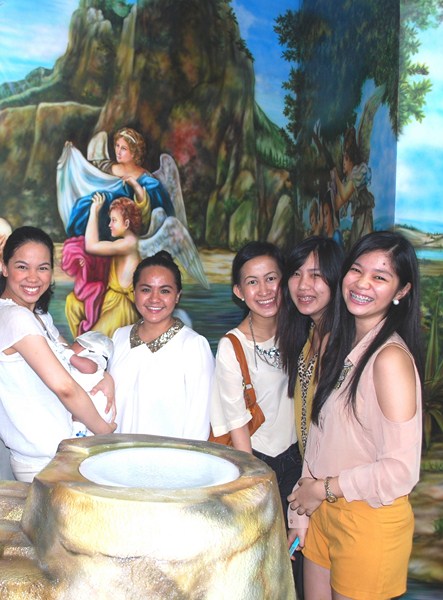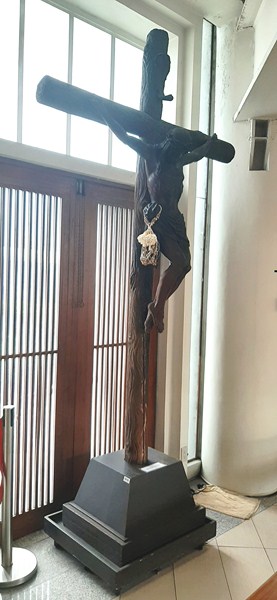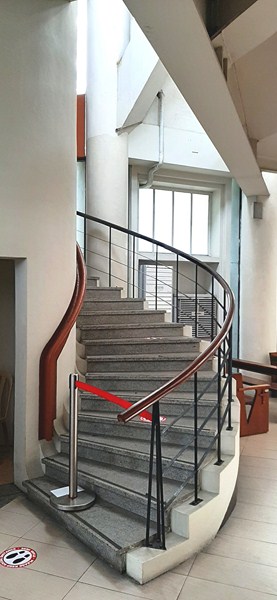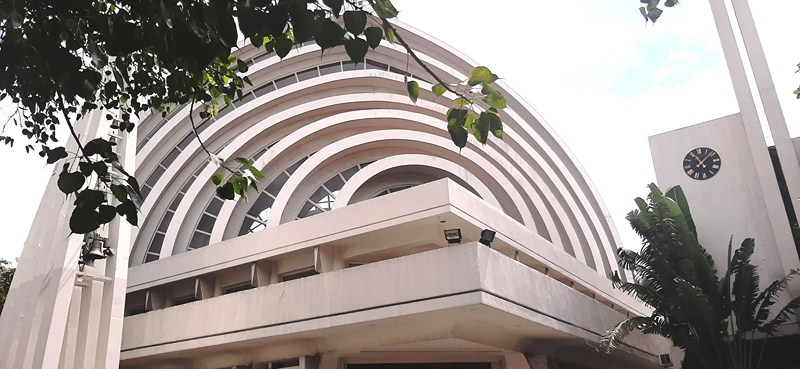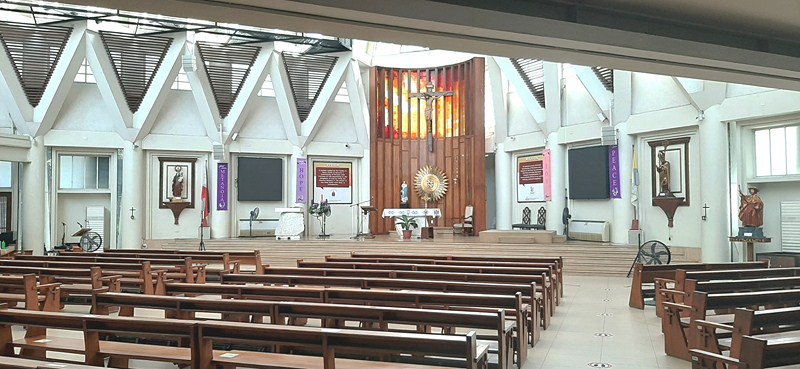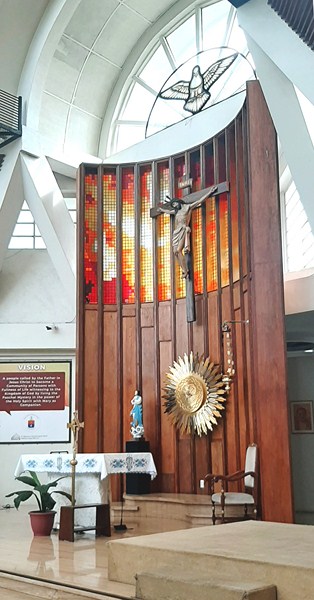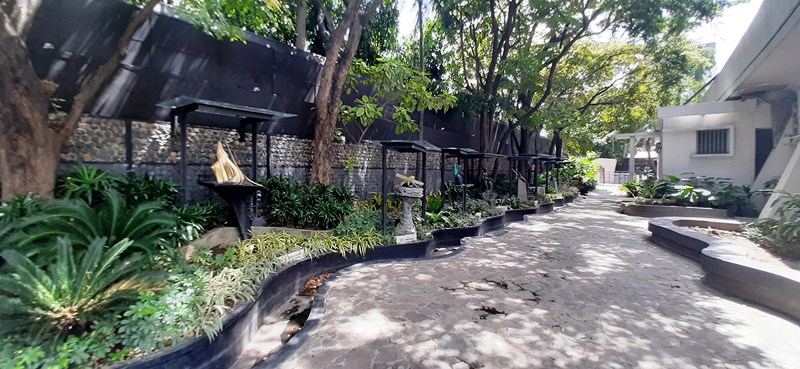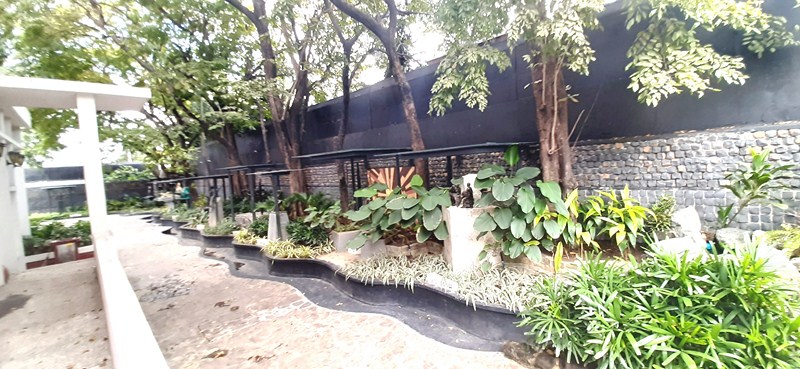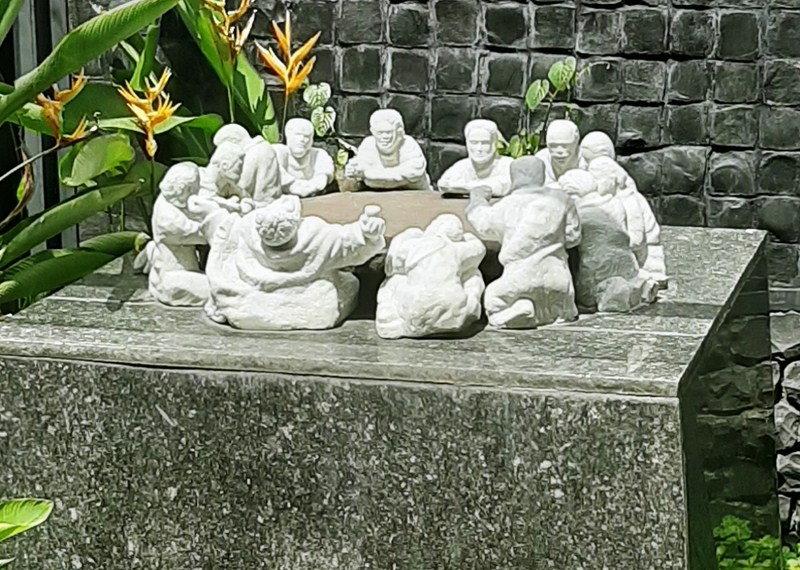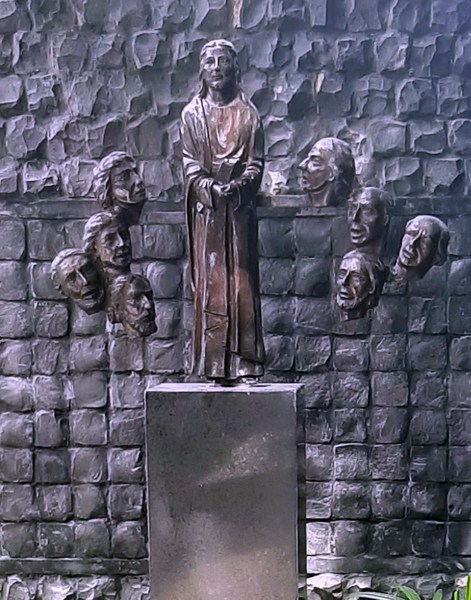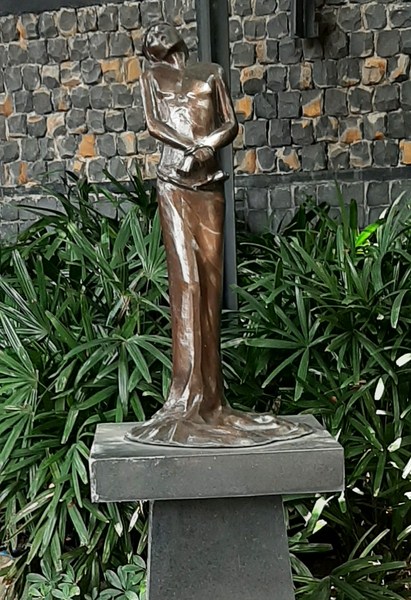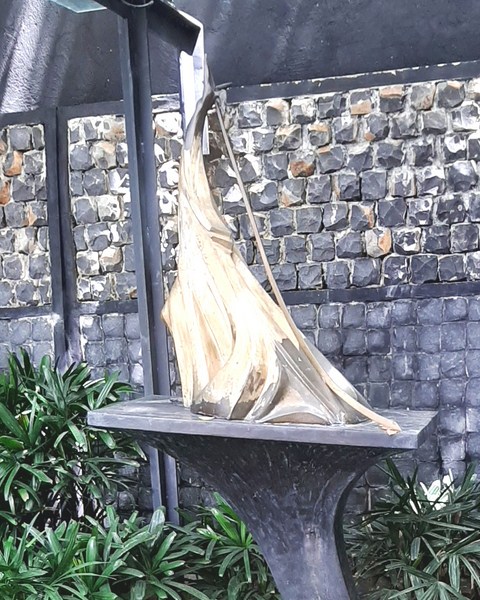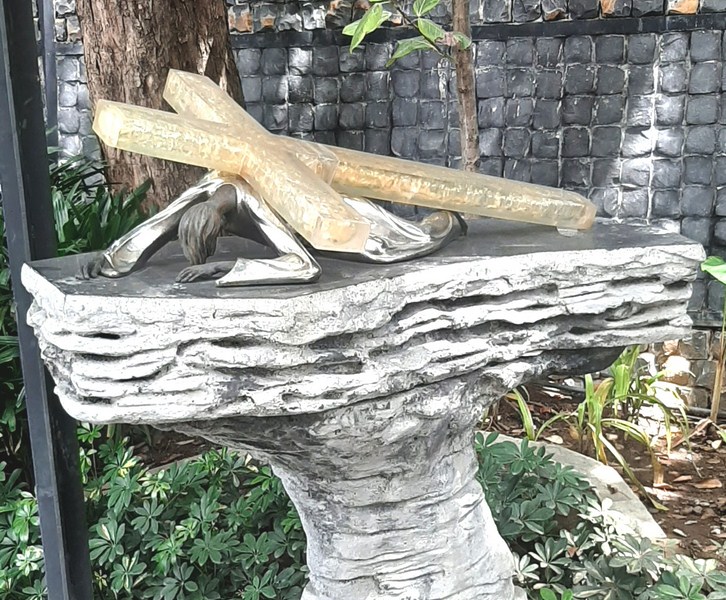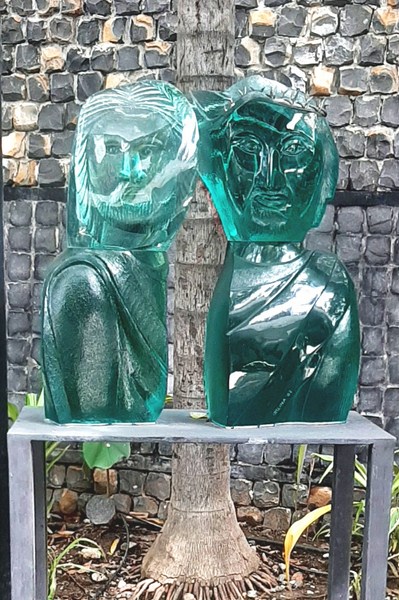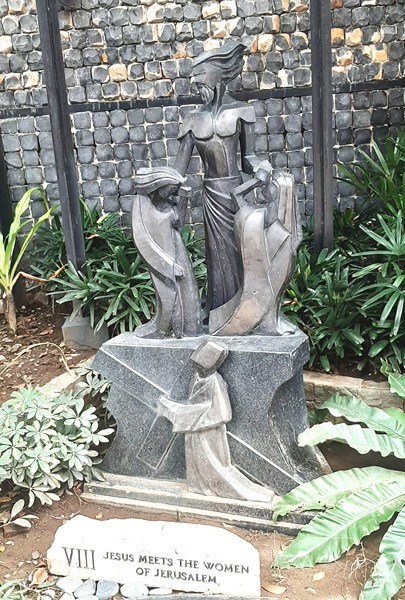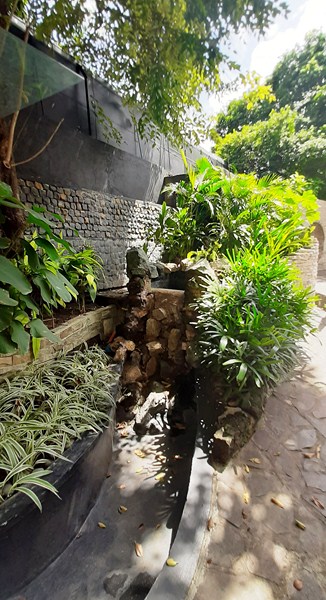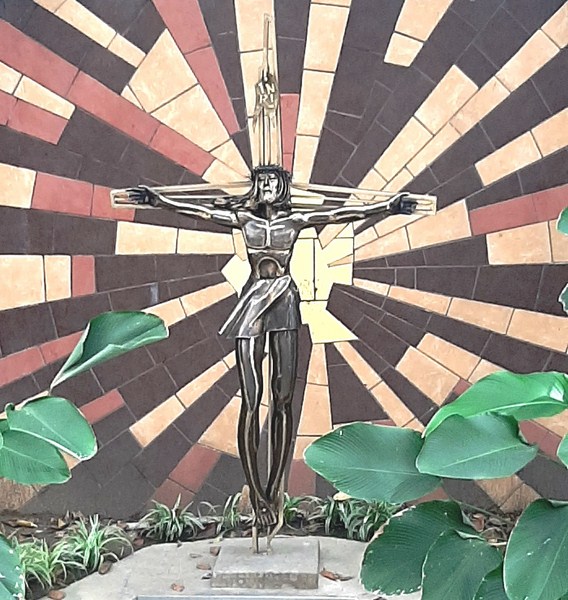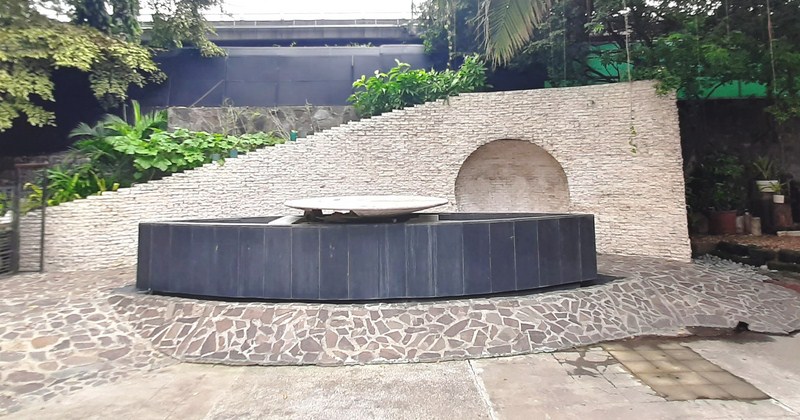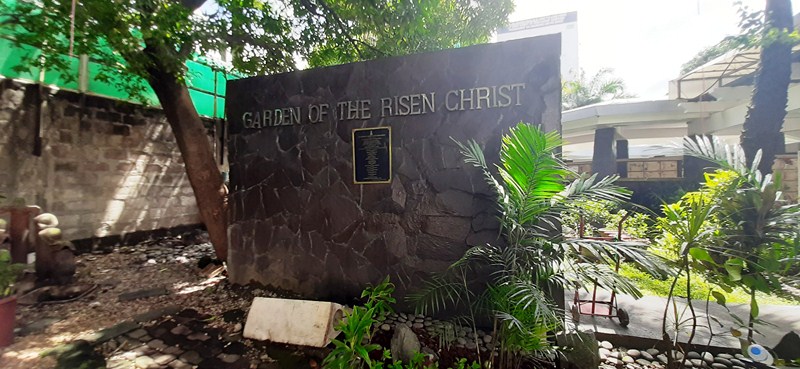The Parish Church of St. Alphonsus Mary de Liguori in Magallanes Village in Makati City, also known as Magallanes Church has, for a long time now, been a big part of our family life. On August 1, 2003, my son Jandy and daughter Cheska were both confirmed here while my grandson Kyle was baptized here on September 29, 2012.
It was also Cheska’s and my son-in-law Bryan’s first choice for their wedding venue but they had to settle for the Shrine of St, Therese of the Child Jesus as their preferred time slot was already taken. However, they did get Fr. Lorenzo Ruggiero, Magallanes Church’s parochial vicar, to officiate at their December 14, 2019 wedding. We also frequently attend the Saturday (6 PM) anticipated masses here and, even during this pandemic period, patronized their online mass.
The church, then and now, is a showcase of works of a number of National Artists of the Philippines. The original, intimate and low structure, started on July 11, 1968, was designed by my late uncle and National Artist for Architecture Leandro V. Locsin in his signature Brutalist-style.
The then 800 sq. m. parish church, much like a smaller version of the former Folk Arts Theater (now the Tanghalang Francisco Balagtas), had a perfect square plan (28 m. each side), with a 4 m. high wooden coffered ceiling and a central aisle that ran along the diagonal of the square. The church, with narra pews, had a seating capacity of 300.
Along the perimeter were 28 massive, 4 m. high concrete buttresses, wide at the base and narrow at the top, which actually just supported a tall parapet wall (not a roof slab) that shielded the corrugated G.I. roof. Later, a PhP12 million airconditioning system was installed.
Within its 36 years of existence, Makati grew to become the country’s financial capital and it became one of the busiest churches in Metro-Manila. In 1991, the 22-storey Asia Pacific college building (on the lot once occupied by the Karilagan Finishing School) was built across it and the South Superhighway beside it became a two-level highway. On March 24, 2002, Palm Sunday, the Garden of the Way of the Cross, designed by late 2006 National Artist for Architecture Ildefonso P. Santos Jr. during the tenure of Monsignor Ernesto Cruz, was dedicated.
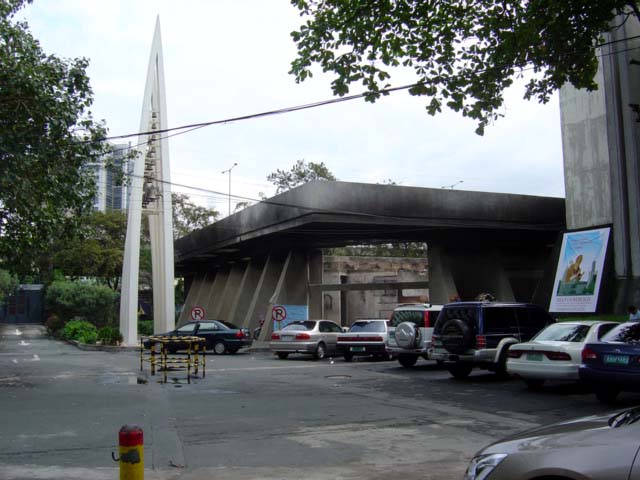
The church after the September 9, 2004 fire. The carillon beside it survived unscathed (photo: www.stalphonsusrebuilds.blogspot.com)
On the morning of September 9, 2004, a fire (starting around 2 AM and extinguished 5:32 AM) gutted the nearly four decade old church. While the interior was razed, there was only minimal damage to the façade, with only the glass windows destroyed.
However, several small images of Mother Mary used in the procession celebrating the Feast of the Virgin Mary, some made of expensive ivory, were also consumed by the fire. Miraculously, a wooden statue of the Crucified Christ was recovered, relatively unscathed, from the fire and has been restored and again installed inside the rebuilt church.
After much deliberation, the parish decided that it would be more economical and symbolically pithy to preserve the concrete structure that survived the fire by salvaging the 28 buttresses that remained, rather than demolishing them and starting from scratch. The parish commissioned Dominic Galicia (who also designed the church’s Adoration Chapel in 2000) to lead the church rebuilding project with Ronald Santiago as the structural engineer. During the duration of the construction, masses were held in a bahay kubo (originally a venue for social gatherings) at the back of the rectory. The new church was dedicated on August 1, 2007, the feast day of St. Alphonsus Mary de Liguori.
The new rebuilt church, a symbol of a community transforming tragedy into grace, has an aesthetically pleasing facade, with a soaring roof that increased it height from 6 m. to 28 m.. A new mezzanine was added to increase seating from 300 to 900.
The existing structure was reused as the springboard for the soaring roofs. The new structure consists of 13 roof vaults (thin-shell concrete membranes clad in unglazed clay tiles, which will help reduce heat gain), representing Jesus and the 12 Apostles, resting on new composite columns.
The 28 hollow buttresses, originally designed for aesthetic effect, now fulfill a new structural purpose as they were filled with concrete to of providing lateral support to the new composite columns. The 8 m. wide central roof vault, traveling the longest distance (which is the diagonal of the square plan), rises to a height of 28 m..
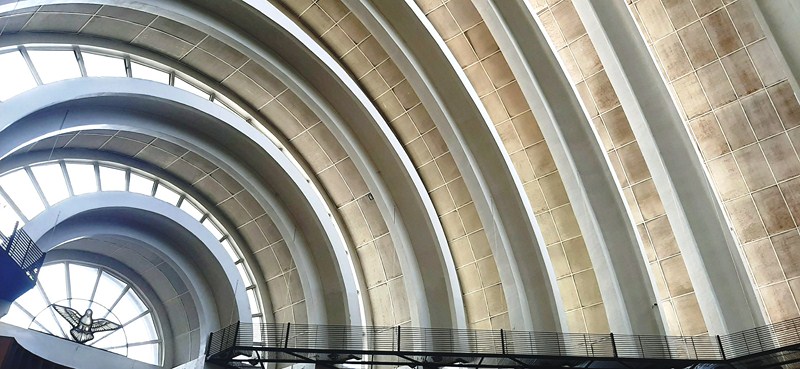
The roof vaults seen from the interior of the church. The vaults are cladded with acoustic ceiling boards (for sound absorption) on aluminum T-runners
Independent, 4.5 m. wide roof vaults, ascend parallel to it on either side, beginning at 11 m. from ground level, then 14 m., 16 m., 18 m., 21 m., and 25 m., like the 12 apostles who accompanied Jesus Christ. The vaults are separated by clear glass windows which, in the upper reaches of the building, are also operable. The presence of these windows now provides a bright interior.
The wooden church doors, featuring carvings of scenes from the life and death of Christ, were inspired by the 13th century frescoes by the Italian painter Giotto and made by the seasoned craftsmen of Betis (Pampanga).
The Art Deco-inspired interior features a simple wooden and glass altar, modern, Minimalist-looking pews and high ceilings. The altar wall, made with wood-clad concrete, incorporates stained glass panels which depicts the burning bush where God appeared before Moses. Above it is the dove which represents the Holy Spirit. The altar pews are oriented so that all attention is on the altar, an arrangement somewhat reminiscent of the Church of the Holy Sacrifice in Diliman (Quezon City), another Locsin masterpiece.
Check out “Church of the Holy Sacrifice“
September must be an unlucky month for the church as, on September 23, 2009, flash floods inundated the church at the height of Tropical Storm “Ondoy” (Typhoon Ketsana). The baptistery, a separate facility in the area, was was completed and blessed in October 2009.
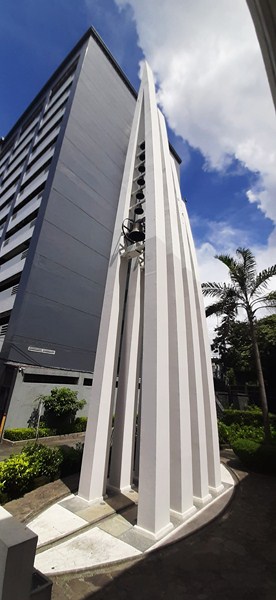
The Minimalist-style carillon. In the background is the Asia Pacific College where Jandy finished college
Nest to the church entrance is the unique and splendid, Minimalist carillon with four pointed steel arches of increasing height, the tallest at 17 m., which follows the design of the roof vaults of the main church facade. Dedicated on December 14, 2002 and spared from the 2004 fire, it carries 18 bronze bells from the Netherlands.
The Garden of the Way of the Cross, containing 14 Stations of the Cross (each a work of a noted artist, two of which are National Artists) is, outside the local community is practically unknown, despite being kept in a garden along one of the country’s busiest thoroughfares.
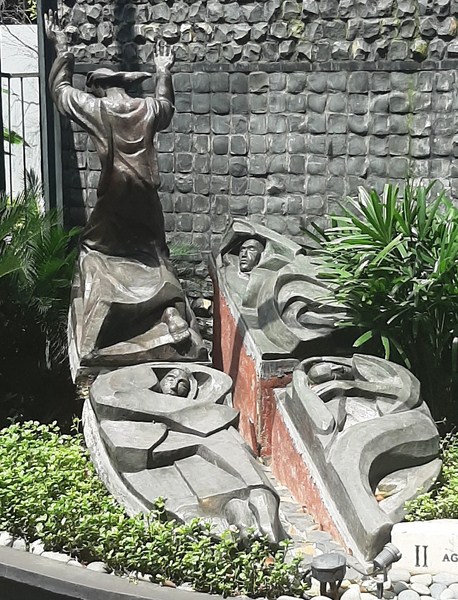
Station II – Agony at the Garden by Abdulmari “Toym” Imao. His art is known for its commentary on Filipino social conditions, as well as for its pop culture sensibilities. Among his most notable early sculptures include the Tandang Sora National Shrine (Quezon City), the Andres Bonifacio National Shrine (Maragondon, Cavite), and the Dr. Jose P. Rizal statue (Carson City, California), ] In 2015, his exhibition “Desaparecidos” at the Bantayog ng mga Bayani was widely recognized as an important commemoration of the abuses of Martial law under Ferdinand Marcos.
Dedicated on March 24, 2002, it has glass canopies that shield them from rain and falling branches. A 1 m. wide running stream separates the sculptures from a reaching hand, without blocking the view and a wall of black java helps secure the garden and minimizes the noise coming from the highway.
Parishioner and landscape architect Ildefonso P. Santos Jr., assisted by landscape architect Cecile Herras Tence, planned the plants that would go with the sculptures and designed a curvilinear landscape to soften their sculpture’s hard materials. A persisting threat to these prized artworks is the dust, grime and air pollution coming from the nearby South Luzon Expressway (SLEX).
The stations, commemorating Jesus Christ’s Passion and Death through 14 contemplative markers, feature masterpieces by a virtual Who’s Who of contemporary Philippine art. All the sculptures were limited to 4 ft. in height, minus the base and all but one of the works were commissioned by the parishioners and donated to the church.
Mary and John at the Foot of the Cross (Station XI), a metal tableau of Mother Mary and the Apostle John at the foot of the cross, was a donation from the late artist himself, Solomon Saprid. The Last Supper ( Station I), a creation in stone, was done by the late 1976 National Artist for Sculpture Napoleon V. Abueva, hailed as the father of modern Philippine sculpture.
The Agony in the Garden, another bronze statue of Christ, was done by the late 2006 National Artist for Sculpture Abdulmari “Toym” Imao. Jesus Dies (Station XII), a bronze of Jesus nailed to the cross, was fashioned by the late Eduardo Castrillo, the man behind the Edsa People Power Monument. Simon of Cyrene Helps Jesus (Station VII) is a chunk glass depiction of the encounter between Christ and Simon of Cyrene on the way to Calvary, was rendered by the renowned glass sculptor Ramon Orlina.
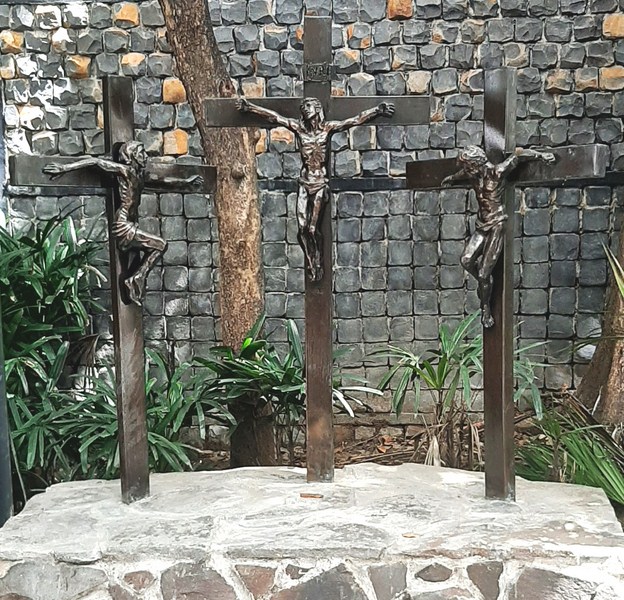
Station X – Jesus Forgives a Thief at the Cross by Priscillano “Jun” Vicaldo Jr.. A native of Camarines Sur, Jun is dept in both classical and modernist styles. A graduate of the University of the Philippines (U.P.) College of Fine Arts (CFA), studied along with other noted artists such as Agnes Arellano and Peter Tiamzon de Guzman, under National Artist for Sculpture Napoleón Isabelo “Billy” Veloso Abueva. Vicaldo continued his studies at the La Salle SIA School for the Arts, in Singapore; and worked under Manuel Casal. His commissioned works include pieces at the Subic and Olongapo, Adamson University, National Historical Commission Building, Naga City Robredo Museum, Naga Cathedral and Penafrancia Shrine.
Jesus is Nailed to the Cross (Station IX), by Francisco Verano, depicts a muscular but proportionately formed Jesus Christ fastened to a large cross attached diagonally (instead of the usual upright) on a slab of slanting concrete.
Jesus Meets the Women of Jerusalem (Station VIII), by Juan Sajid Imao, the younger brother of Abdulmari Imao, evokes the scene in a narrative composition. Two stations were also done by brothers, the late Rosalio “Ros” B. Arcilla Jr. (Jesus Is Condemned, Station III) and Raphael Arcilla (Crowning with Thorns, Station IV).
The Resurrection (Station XIV), a marble and black granite interpretation done by Dominic Galicia himself, features a black granite fountain that resembles a tabernacle with a wide, white marble basin on its top. A local marble wall, behind it, has a niche on the side that represents the empty cave following Christ’s resurrection.
The other stations were done by Tito Sanchez (Jesus Carries the Cross, Station V), Jose M. Mendoza (Jesus Falls, Station VI), Priscillano “Jun” Vicaldo Jr. (Jesus Forgives a Thief at the Cross, Station X), and Antonio T. Mondejar (Jesus is Laid in the Tomb, Station XIII).
Beyond the Stations of the Cross is the Garden of the Risen Christ, an impressively-designed memorial garden, surrounded by rows of tombs, featuring a sculpture of a risen Jesus Christ above a pond.
St. Alphonsus Mary de Ligouri Church: Humabon Place, Lapu Lapu St., Magallanes Village, Makati City 1232. Tel: (02) 8851-0275, 8852-2750 and 8852-8228. Email: info@saintalphonsus.ph.

